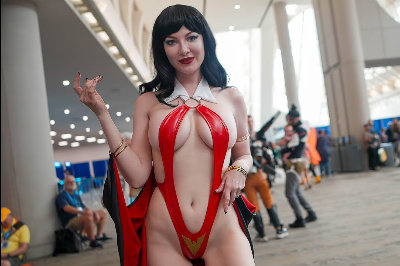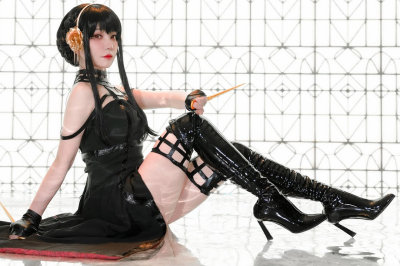RABBIT-PROOF FENCE - Q&A with DORIS PILKINGTON GARIMARA
Movie Interview by Toby White
Following a preview screening of RABBIT-PROOF FENCE, PHASE9 met the daughter of the film's protagonist and the book's writer, Doris Pilkington Garimara at the Dorchester Hotel in London.
Did it take you a long time to write the book?
About nine years. from the time I heard the story it took me that long to gather all the information.
I was completely unaware of this practice of removing children from their families, how aware are the people of Australia of it?
Very few...
Why is that? Was there a cover up or is it simply lack of education on the subject?
It was never taught in schools so the people who were actually involved were the only people who knew about it. They had Protection Officers who worked on cattle stations who kept in regular contact with the Department [of Aboriginal Affairs] when Aboriginal children were born on their property and the department was notified immediately. The government then monitored the movement of this child until about four years old and then the Protection Officer would then pick this child up and take them to camps.
Has the book been published here?
I think it's going to be published through Miramax.
To tie in with the film?
Yes.
What was the reaction in Australia to the book?
As soon as it was published, a journalist from the Sydney Morning Herald contacted me, wanted to meet me and actually drive from Moore River to where my mother and aunt lived. So we arranged that. He went back to Sydney and then wrote an article called The Long Walk. As soon as the article was published, the University of Queensland Press was flooded with phone calls from film companies wanting to buy the film rights to the book. There were so many that UQP asked them all to write a synopsis on how they would make the film and Christine Olsen, the writer and producer of Rabbit-Proof Fence, was the successful film-maker.
How accurately do you think your mother's story is reflected in the film?
Look at us authors, I mean I was so arrogant to believe that the film-makers would follow my book very very closely, as for the script, I was like "Is this my story?" but its a matter of knowing and seeing the point of view of the film-makers. I was coming from a writer's perspective so I had to shift a little too to realise how the book makes a good film, makes a good story. Also, I was script consultant so I was there to see that no indigenous culture was breached and see that they respected the Aboriginal people's express wishes. When I asked my mother for permission to write the book she said, "Yes, you can write the book, tell the story but don't talk about forbidden subjects".
When did your mother initially relate her story to you?
Actually, she didn't, Auntie Daisy [played by Tianna Sansbury in the film] did. Mum's part of the story didn't come until the end when Gracie [their cousin, played by Laura Monaghan] was taken from Wulloona and taken back to one of the settlements. Auntie Daisy got out of the area and could not remember what happened to her cousin so Mum filled in the details. In the story, she went back to Wulloona because her mother was there and a tracker discovered her and asked her if she was Gracie from Jigalong and she said, "No, my name is Lucy" and that she had run away from her mother. So he left her for a day and then, convinced that she was, in fact, Gracie, he and the police picked her up and kept her in a holding until they found someone to escort her back to Moore River. That part of the story was told by my mother.
And from hearing the story, how long was it before you then decided to write the book?
Well, I tried to write the story immediately but having studied journalism, what I'd written was in a journalistic style and I sent that to the Aboriginal Publications in the Kimberleys. They replied with some really positive comments but suggested, as a terrific story, it should be told in a narrative style, in a fiction style. Because I didn't have any practice in writing in a narrative style, I gave myself the challenge of trying to write another story to explain the issues that Aboriginal women were confronting. I posted the manuscript to the University of Queensland Press and entered it into an award system and won the award that year, in 1990, and that enabled me to have the novel published. That gave me encouragement so I went back to Rabbit-Proof Fence. I still didn't have any details but I was encouraged by the story and I wanted to know why they were taken and incarcerated in a settlement. In my research I was asked to give a talk on family history at the Department of Aboriginal Affairs' library and I told them about the girls and their escape from Moore River. After the talk one of the lads came up to me and said, "That story is well documented" and I said, "What?!" He actually sent me copies of articles and it was from that information and my research that I was able to write the story.
Did it surprise you that there was interest from film-makers?
I thought people would want to read [the book] because it was a special story, that everybody would want to read it but, yes, that surprised me.
How do you feel the character of A O Neville [Head of Aboriginal Affairs] was portrayed in the film [by Kenneth Branagh] against what your research has pulled up?
For me, being a child in a camp myself, we had a huge portrait of Mr Neville and, looking back, I used to believe that he was our benefactor. It wasn't until I was doing my research and talking to my mother's generation, who have a terrible memory of Mr Neville, that they called him Mr Devil. I think as a man he was a dedicated administrator and he believed in what he was doing in breeding out the Aboriginal characteristics of half-caste children.
Did your mother mention what it was like to actually meet him? In the film, there's that scene where she, as a girl, is called over by him...
In reality she wasn't there long enough to meet him although he often came up to the camp. He used to bring guests to show them the idealised conditions for the children but they did not see what went on in that place. Even in my time we did not have sheets or pillows, just a blanket and a mattress stuffed with coconut hair and filled with bed bugs. When we had visitors, they would put sheets and pillow slips on the beds to show the visitors but as soon as they went, the sheets and slips were taken off, folded up and put back into storage. They didn't see the horrific side of it, the over-crowding, the buckets for toilets...
You mentioned the impact of the film on your family but what of the reaction of the public?
It made a big impact on "the stolen generation" [those incarcerated]. I didn't see it as a film about the stolen generation when they were making the film. That became highlighted after it came out. Every person from the stolen generation claimed that story for themselves, except obviously the walk home. Everybody could relate to it and it had a great healing effect for many Aboriginal people. There was one boys home that was one of the worst camps in Western Australia. Every lad that came out of there never talked about it and last year a group of them, in their 60s and 70s, met and talked about their experiences for the first time. And about six weeks ago I was asked along to a reunion to give a talk and even more had come forward to talk about their experiences of separation and the treatment in that place.
Are there other aspects of Australian history you'd be interested in or do you feel your work is done now that you've done your own family story?
As a member of Australians For Reconciliation I've been very active in spreading the word, as it were, and going into regional centres, particularly in towns where racism has been embedded from the year dot, and try and break down some of those barriers. It has happened, others have encouraged Aboriginal arts where that hasn't been much interest before so it's giving themselves a determination and a chance to get their dignity back.



